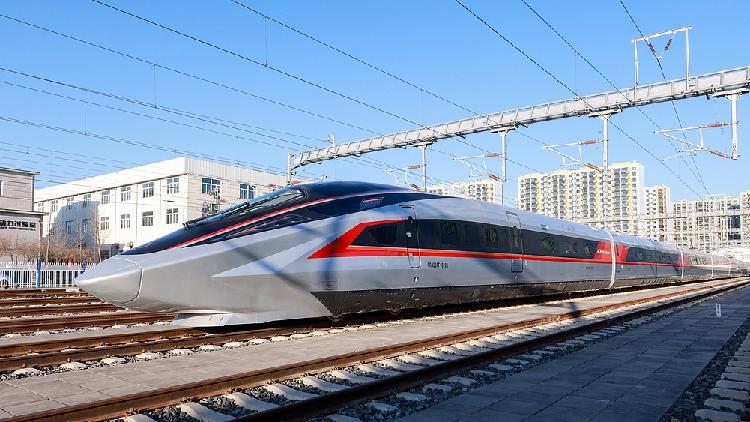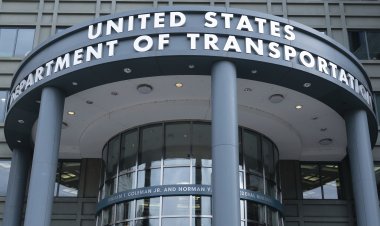Testing Begins for Prototypes of China's New CR450 High-Speed Train
Prototypes of China’s new CR450 high-speed train are currently undergoing testing.

Dubbed the world's fastest high-speed train, the CR450 is capable of reaching speeds of 450 kilometers per hour during both tests and operational runs, as reported by China State Railway Group Co., Ltd.
At the test center, engineers are meticulously monitoring the "weight control" of the CR450 prototypes. To achieve this, sensors have been placed on the tracks to relay real-time weight data from each of the eight wheels on both sides of every carriage to a computer system, enabling precise observation and adjustments for optimal performance.
"While reducing the weight, we must ensure that its strength does not decrease, and we even need to increase its strength because of the higher speed. It's just like a person who wants to slim down while building strength. This involves structural changes and material innovations," said Chen Can, an associate researcher at the Locomotive and Vehicle Research Institute of China Academy of Railway Sciences Corporation Limited.
Researchers are also addressing air resistance challenges during high-speed operations, including resonance and heat dissipation, by enclosing the entire bogie area underneath the train for the first time.
"Ensuring the smoothness of the entire train body minimizes resistance during operation," remarked Ha Dalei, a senior designer at the National Engineering Research Center of Rail Transportation of China Railway Rolling Stock Corporation Changchun Railway Vehicles Co., Ltd.
The CR450 prototype has successfully undergone static and low-speed dynamic tests focused on traction, braking, and noise. The next phase will involve gradually increasing speeds during dynamic running tests.
China currently stands as the only nation with commercial high-speed rail operations reaching 350 kilometers per hour, and the CR450 aims to raise that speed by an additional 50 kilometers per hour.
According to Zhang Bo, director of the Locomotive and Vehicle Research Institute at CARS since 2018, the team has dedicated years to verifying the technical feasibility, establishing appropriate top-level standards, and determining the technical approach. While a speed increase of 50 kilometers per hour might appear modest, navigating the associated challenges is considerable. The objectives include achieving higher speeds with enhanced operational safety while significantly reducing drag, energy consumption, vibrations, noise, and improving automation and lightweight design.
These advancements have led to a smoother train body, enhanced aerodynamics, and a notable reduction in resistance. The CR450 incorporates technological innovations that cut drag by up to 22 percent.
Zhang emphasized that the speed of high-speed trains transcends mere technical considerations, intertwining with economic factors and environmental impacts. Nonetheless, speed remains a key indicator of high-speed rail performance.
Ramin Sohrabi for TROIB News
Discover more Science and Technology news updates in TROIB Sci-Tech












